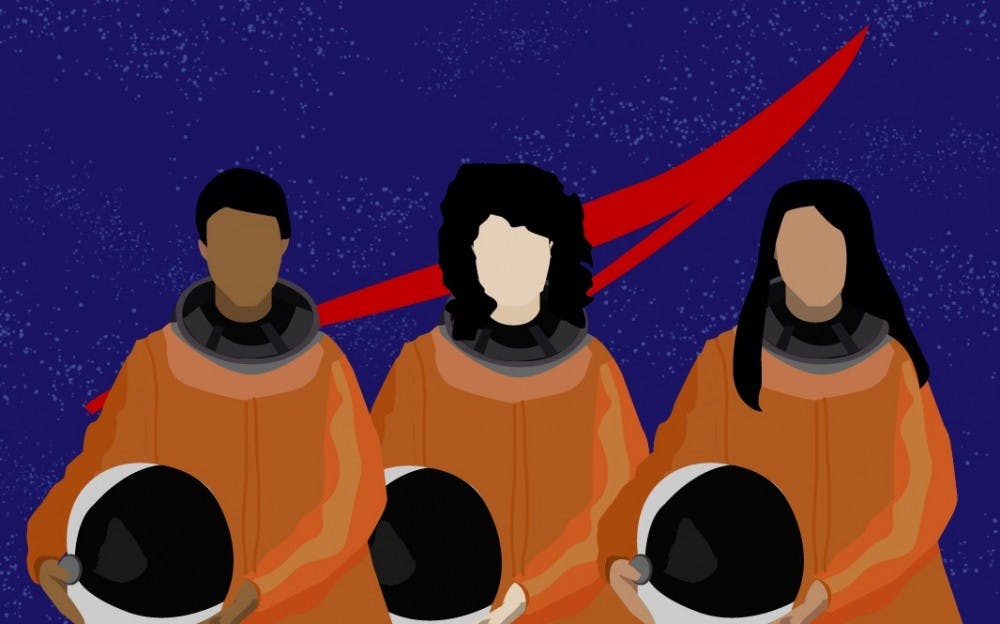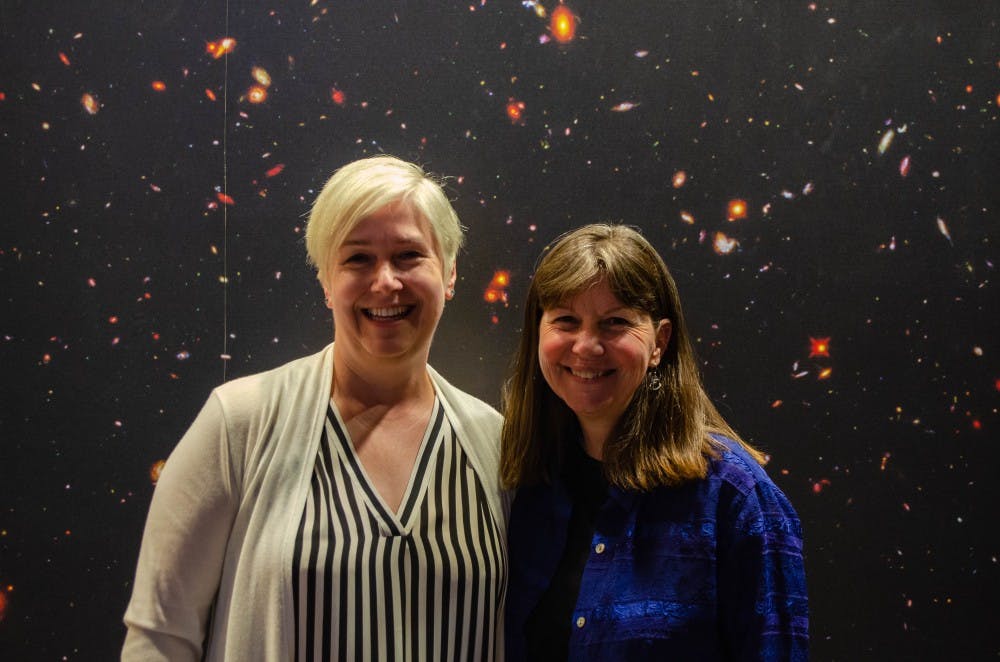Throughout history, the culture of STEM froze out talent that didn’t resemble the straight, white men at the top — an image that the field has been trying to move away from in recent years.
But when a spacewalk, scheduled for March 29 and featuring an all-female crew of Anne McClain and Christina Koch, ran into a sizing issue with the suits that led one of them to be switched out for their male colleague, questions surrounding the diversity of women in science, technology, engineering and math fields returned to the forefront.
The choice made was the best one for the mission and the safety of the astronauts onboard the station, because it would have taken extra working hours to prepare another suit that would have subjected McClain to unnecessary risk, according to Newsweek.
Still, the oversight is a telling aspect of how STEM still struggles to include women and foster their success.
But at ASU, one of the leading university partners of NASA, faculty at the School of Earth and Space Exploration (SESE) are trying to change this by making space for women to reach new heights.
Following the ousting of Lawrence Krauss, a well-known physicist employed by the school, for numerous allegations of sexual harassment, a cultural shift began in the department.
His brainchild, the Origins Project, was folded into the Interplanetary Initiative, co-chaired by School of Earth and Space Exploration Director and principal investigator of the Psyche mission Lindy Elkins-Tanton.
Elkins Tanton is currently focused on creating opportunities for team-building that are diverse, inclusive and “driven by questions.”
“I don’t know if there’s a more inspiring vehicle to get people excited about coming to school and doing their work and learning things than thinking about a human-space future and what it might be,” Elkins-Tanton said.
As one of a small number of women to ever lead a competitive NASA mission, Elkins-Tanton has risen through the ranks to become a standout in her field. Her latest endeavors are about bringing new voices into SESE, such as three-time space traveler Cady Coleman, and delivering yearly talks about the state of SESE.
During the discussions, Elkins-Tanton goes over the metrics of her department, which has neared gender parity, but still lacks diversity in other key demographics.
“This is common in most STEM fields. It’s not endemic to just ASU,” said Tanya Harrison, director of research for the Space Technology and Science Initiative at ASU.
Harrison is a prominent member of SESE and is well-known through the online stratosphere by her handle @TanyaofMars. She uses her social media to discuss inclusivity and representation in STEM and her experience as a woman with a disability solving problems among the stars.
“Diversity is really important because you want to make sure you have all voices at the table and everybody is heard,” Harrison said. “If you’re excluding any subset of people for any reason, then you're losing out on the opportunity to get another perspective on things.”
Harrison said that Elkins-Tanton’s initiatives are making all the difference. Hosting open town halls where department members across all levels can see SESE’s strengths and weaknesses opens up a dialogue for change and improvement.
Coleman, who is ASU’s first ever Global Explorer in Residence for SESE's Interplanetary Initiative, recalled the early days of her training as an astronaut and having to overcome the bias of her male peers.
While she said she felt privileged to have her job in NASA, there were times, to make room for herself, Coleman said she would have to act overly cheerful to discuss new developments and invite herself into the meetings that she would not have been part of otherwise.
"I just feel strongly that we shouldn't have to cheerfully show up, we need to change that," she said.
She said that some of the exclusion she experienced wasn’t intentional, but her male peers had simply never considered that Coleman could be a space-walker, even going as far as to claim she shouldn’t be part of the program after an ill-fitting suit caused a singular poor performance.
“I had above average grades in every aspect of spacewalking,” said Coleman, who stands at 5’4” and is one of the smallest people to ever perform a spacewalk. “I was better than half of the people. And I would still get ‘Do you fit in that suit?’”
In the 1990s, NASA determined that it was too costly to maintain suits in small and extra-large sizes but reversed its decision about the larger suits after less than a year.
“Nobody seemed to notice that this would be a problem," Harrison said.
On Earth, the problems women face take on different forms, such as a lack of smaller fitting gloves, which can pose a safety hazard in laboratories, or mobility issues for those with disabilities.
“It’s something that people don't necessarily think about if they haven't had a lot of women in their labs,” Harrison said of these invisible barriers. "Trying to think about all of the pieces that could come up is really important. You never know what small thing could turn out to be important down the line."
Timiebi Aganaba-Jeanty, a new assistant professor in the School for the Future of Innovation in Society with a background in space and law, often collaborates with the women of SESE.
Aganaba-Jeanty, who participated in the February Women in Space conference organized by Harrison, said pursuing a career in space and law required her to break into a field often perceived as a "boy's club" of space that favors hard science expertise.
"All I do is just try and say, 'There's lots of different people working that are interested in space,'" Aganaba-Jeanty said. "Whether someone is a man or a woman or anything, there's a place for them if they're interested in doing whatever they want to do."
At the conference, which was held in Scottsdale, she hosted workshops that were aimed at empowering participants to break such barriers.
"(Women) really enjoyed the kind of safe space to be able to talk about the passions and the achievements in this really different environment from what they were used to," Aganaba-Jeanty said of feedback she received on the conference.
Harrison said it is crucial for STEM to not make people feel like they’re a token minority representative or the only one of a particular demographic, which can lead to being or feeling singled out, like Coleman experienced.
"The culture in STEM really needs to improve,” Harrison said. “We need to be much more supportive of everybody, in lots of different terms. We need to be much more supportive of women in terms of dealing with serial harassers, in terms of dealing with maternity leave and not making it harder for women to advance just because they might want to have a family.”
Harrison noted that the gender of students pursuing STEM has evened out over time but that the retention rate drops off significantly because of work environments hostile to women.
“It’s even worse if you’re a woman of color or a member of the LGBTQ community or disabled,” Harrison said. “We need to make sure that we're working together to combat those things so the environment will be better for everybody as we move forward."
Correction: Due to a reporting error, a previous version of this article misinterpreted Aganaba-Jeanty's quote in a paraphrase.
Reach the reporter at sabine.galvis@asu.edu or follow @sabinegalvis on Twitter.
Like The State Press on Facebook and follow @statepress on Twitter.





